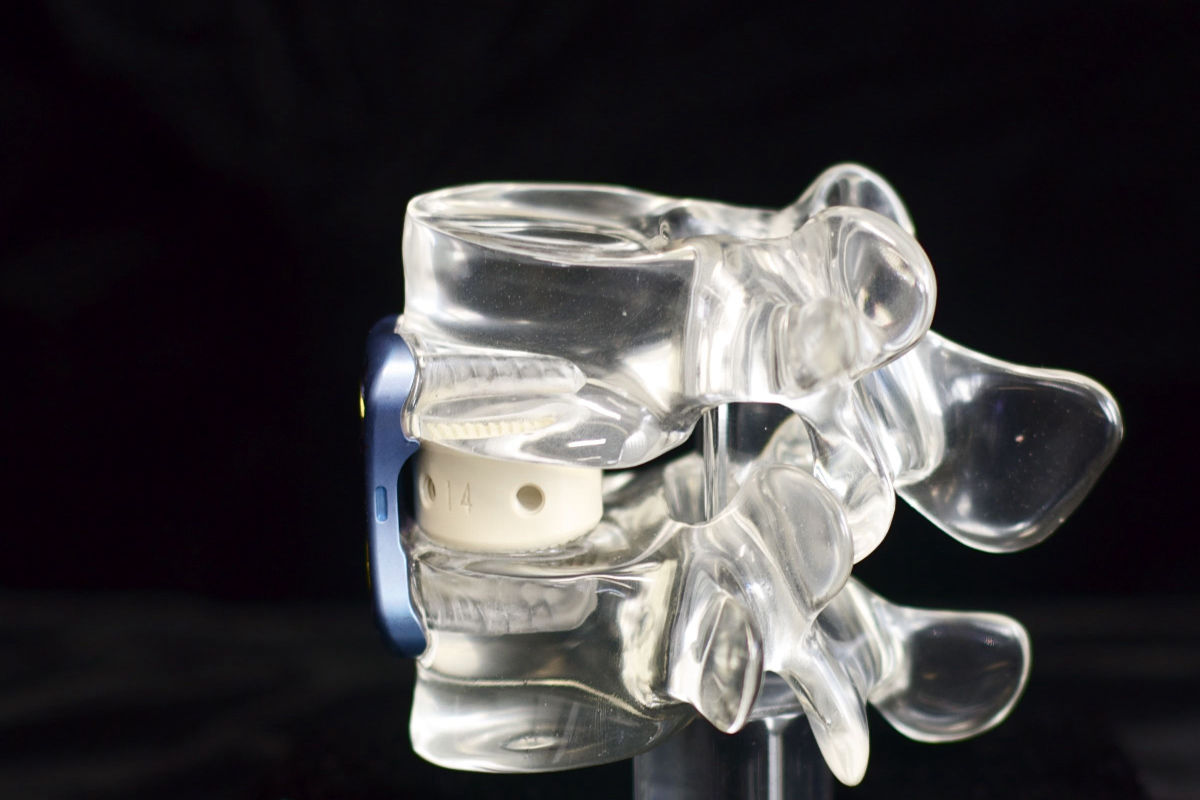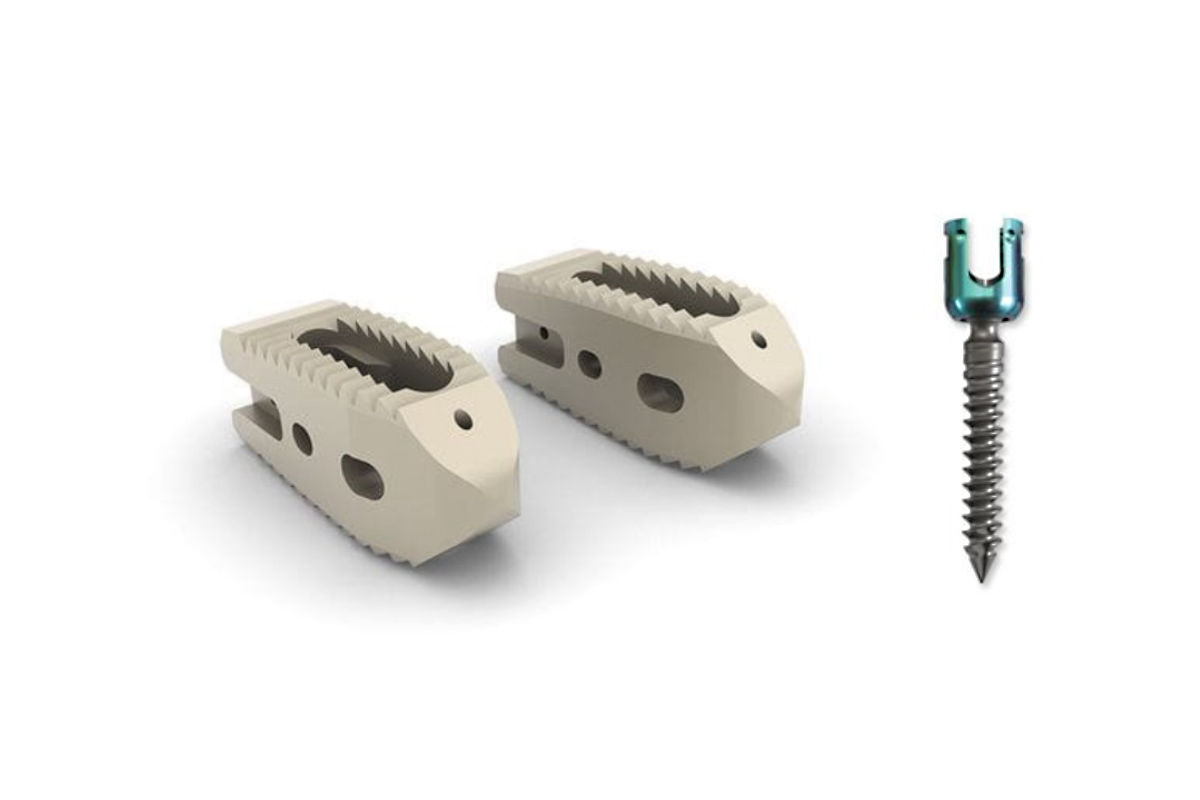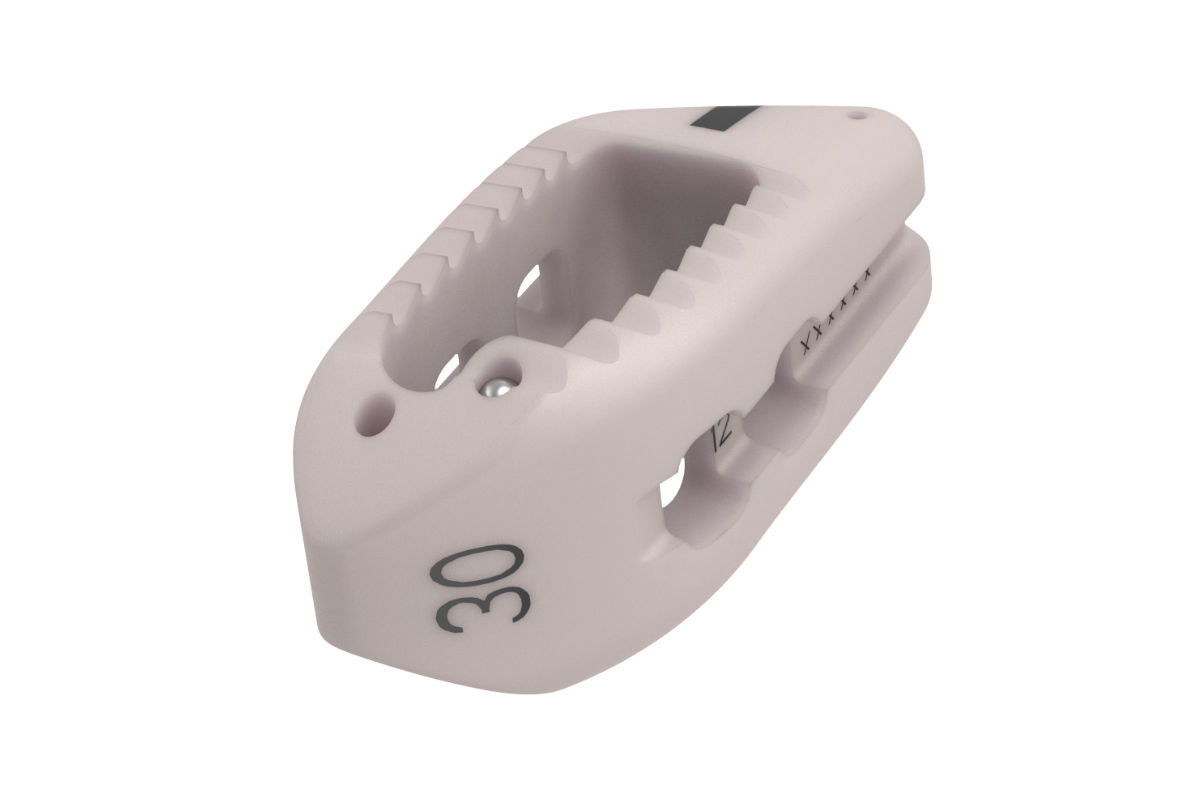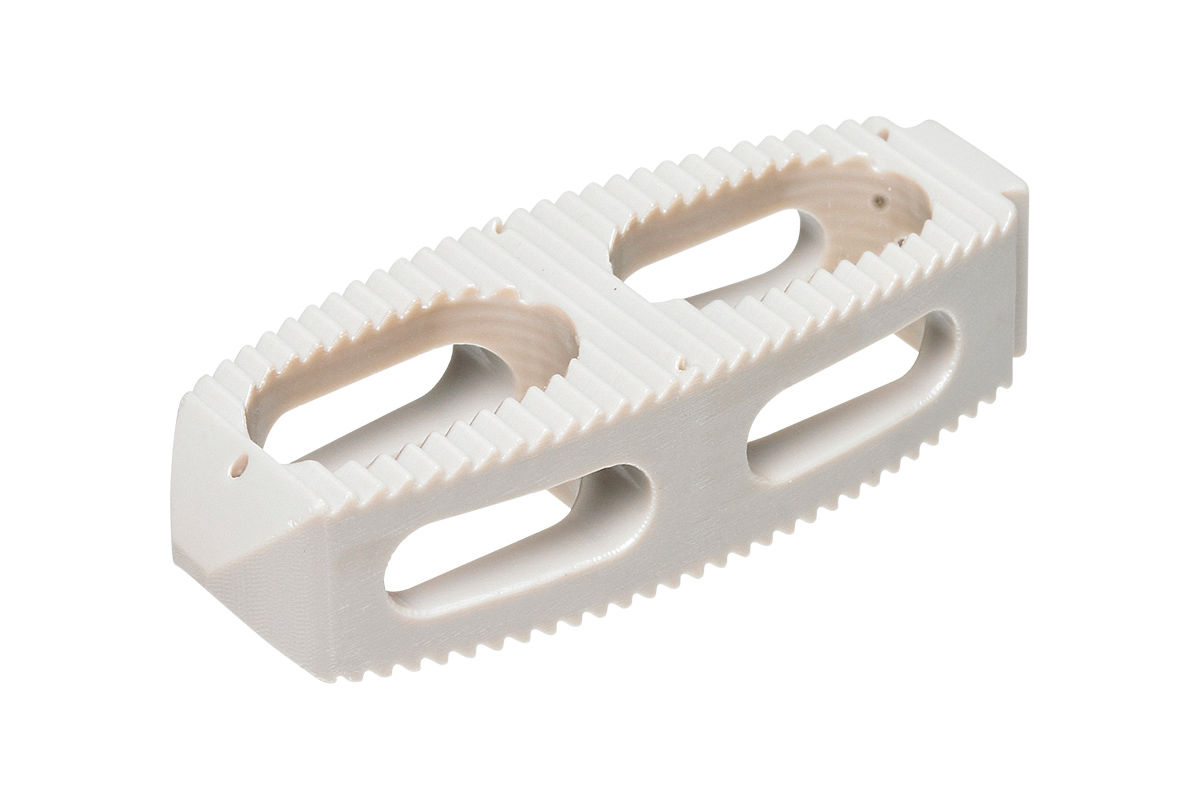ALIF
Anterior Lumbar Interbody Fusion (ALIF) involves removing a damaged disc to relieve the spinal cord or nerve root pressure and alleviate the corresponding pain, weakness, numbness, and tingling. After the discectomy is performed, a bone filled PEEK (plastic) or titanium interbody device is placed at the site of the removed disc. A buttress plate and corresponding screw can be placed into the vertebral body to stop the interbody device, also known as a cage, from moving or migrating.




